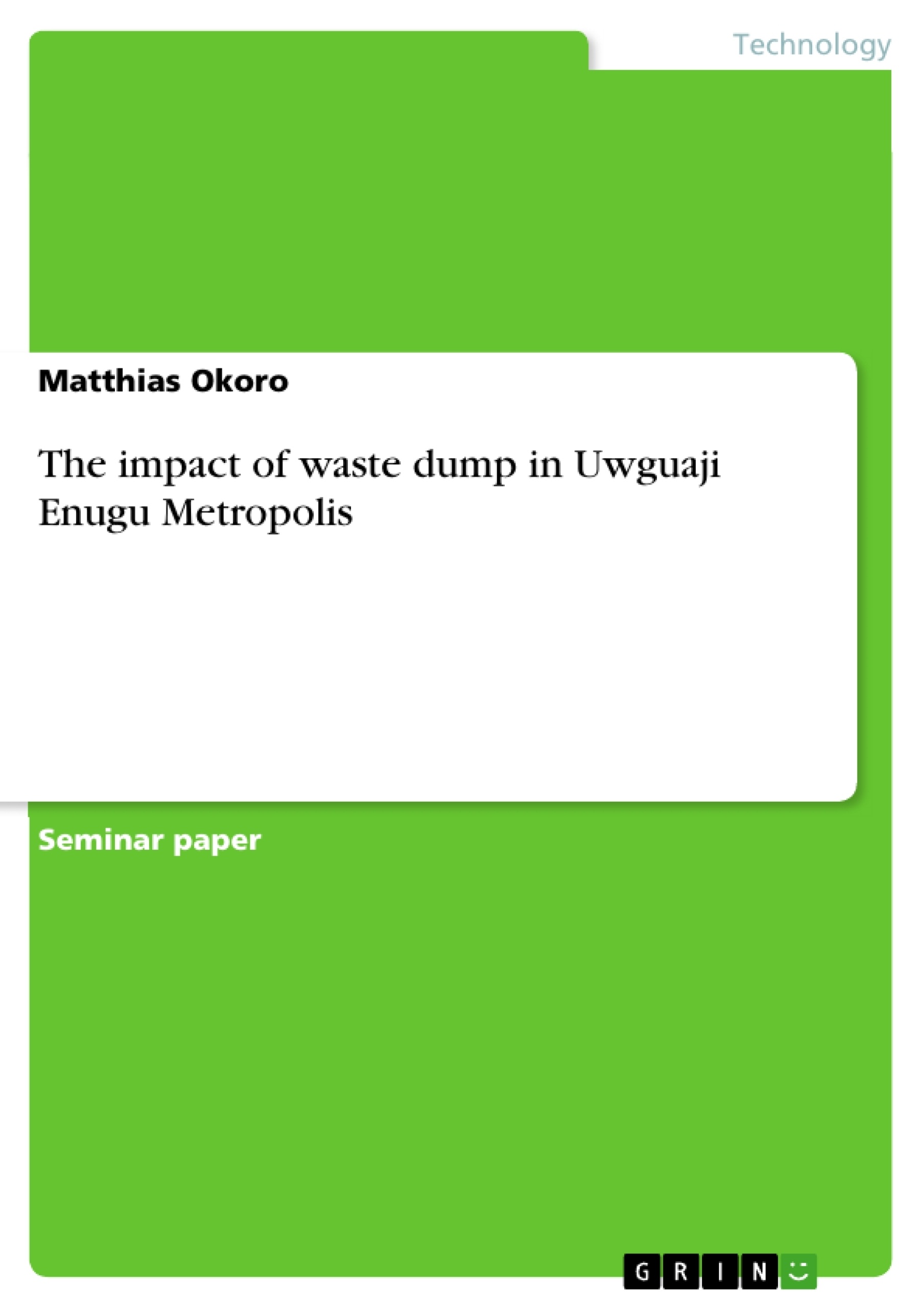Soil and water are vital for our life, health and over-all well-being. But the waste generated from human activities can be hazardous, toxic and even lethal to these two substances because of the high potential it has to contaminate them. The hazardous and toxic parts of waste from different types of human establishments comprising infectious, bio-medical and radio-active material constitute a grave risk, if these are allowed to get mixed with soil and water when it is not properly disposed. Its propensity to encourage growth of various pathogen and vectors and its ability to contaminate other nonhazardous/ non-toxic municipal waste jeopardizes the efforts undertaken for overall municipal waste management.
This is why research light took us to Ugwuaji dump site located in Enugu-Port Harcourt Express Way. The purpose is to collect soil and water sample for laboratory analysis which will help decipher the impact of waste dump in the soil and water by finding out the concentration of different types of heavy metals in the soil and microbial load of the water.
Inhaltsverzeichnis (Table of Contents)
- CHAPTER ONE
- Introduction
- 1.1 Causes of Soil and Water Pollution in Ugwuaji
- 1.2 Industries are to be Blamed for some of the Biggest Soil and Water Pollution Disasters
- CHAPTER TWO
- Methodology
- 2.1 Primary Source of Information
- 2.2 Laboratory Analysis
- 2.3 Secondary Source of Information
- CHAPTER THREE
- Result
- 3.1 Soil Sample Analysis
- 3.2 Factor Loading Plot Oxide of Elements in the Soil of Ugwuaji Dump Site
- 3.2.1 Factor
- 33.2.2 Factor Analysis
- 3.3 Water Samples Analysis
- 3.4 Bacteriological Analysis of Water and Waste Water
- 3.5 Presumptive Coli Form Count
- 3.6 For Waste Water
- 3.7 The Plate Count
- 3.7.1 Water Sample
- 3.7.2 Dilution Factor-
- 3.8 Result for Differential Identification of the Organism Isolated
- 3.8.1 Test
- a) Citrate Utilization Test
- b) Coagulate Tests
- c) Indole Test
- 3.8.1 Test
- 3.9 Interpretation of the Signs Used
- 3.10 Biochemistry and Morphology of Each
- 3.11 The Organism Isolate Form
- a) Proteus Spp
- b) Salmonella Spp
- c) For the Demonstration of H2S Production
- 3.11 The Organism Isolate Form
- CHAPTER FOUR
- Discussion
- 4.1 Impact of Waste Dump on Soil of Ugwuaji
- 4.2 Bio Accumulation-
- 4.3 Bio Magnification or Amplification
- 4.4 Spatial Concentration of Heavy Metals
- 4.4.1 Location 3
- 4.4.2 Location 1
- 4.4.3 Location 4
- 4.4.4 Location 2
- 4.4.5 Location 5
- 4.6 Impact of Waste Dump on the Water of Ugwuaji
- CHAPTER 5
Zielsetzung und Themenschwerpunkte (Objectives and Key Themes)
This research project examines the environmental impact of waste dumping in Ugwuaji, Enugu Metropolis. Its primary objectives are to analyze the contamination of soil and water resources due to waste disposal practices and to assess the potential health risks associated with these pollutants.
- Impact of Waste Dump on Soil and Water Quality
- Analysis of Heavy Metal Contamination
- Bacteriological Analysis of Water and Wastewater
- Health Risks Associated with Waste Dumping
- Recommendations for Sustainable Waste Management Practices
Zusammenfassung der Kapitel (Chapter Summaries)
Chapter One introduces the research topic, focusing on the causes of soil and water pollution in Ugwuaji. The chapter highlights the role of industrial activities in contributing to environmental degradation. Chapter Two outlines the methodologies employed in the study, including primary and secondary data collection, laboratory analysis, and bacteriological testing. Chapter Three presents the results of the soil and water sample analyses, including data on heavy metal concentrations and bacterial counts.
Schlüsselwörter (Keywords)
This research focuses on environmental pollution, waste management, heavy metal contamination, bacteriological analysis, soil and water quality, and health risks. The study explores the impact of waste dumping on the environment and public health in Ugwuaji, Enugu Metropolis.
- Quote paper
- Matthias Okoro (Author), 2012, The impact of waste dump in Uwguaji Enugu Metropolis, Munich, GRIN Verlag, https://www.grin.com/document/281541



